Inheritance is a central concept in object-oriented programming that allows you to create new classes based on existing classes. With inheritance, you can reuse code and simplify the structure of your programs. This guide provides you with the fundamental aspects of inheritance in PHP and shows you through a concrete example how to implement this concept effectively in your projects.
Key Insights
- Inheritance allows you to derive a new class from an existing class.
- Properties and methods of the base class are inherited by the derived class.
- Methods can be overridden in the derived class to implement specific behavior.
Step-by-Step Guide to Inheritance in PHP
1. Defining the Base Class
Start by defining a base class. In this example, we will create a class called Car, which includes a basic function for accelerating. This class has a public property for speed and a method to increase speed.
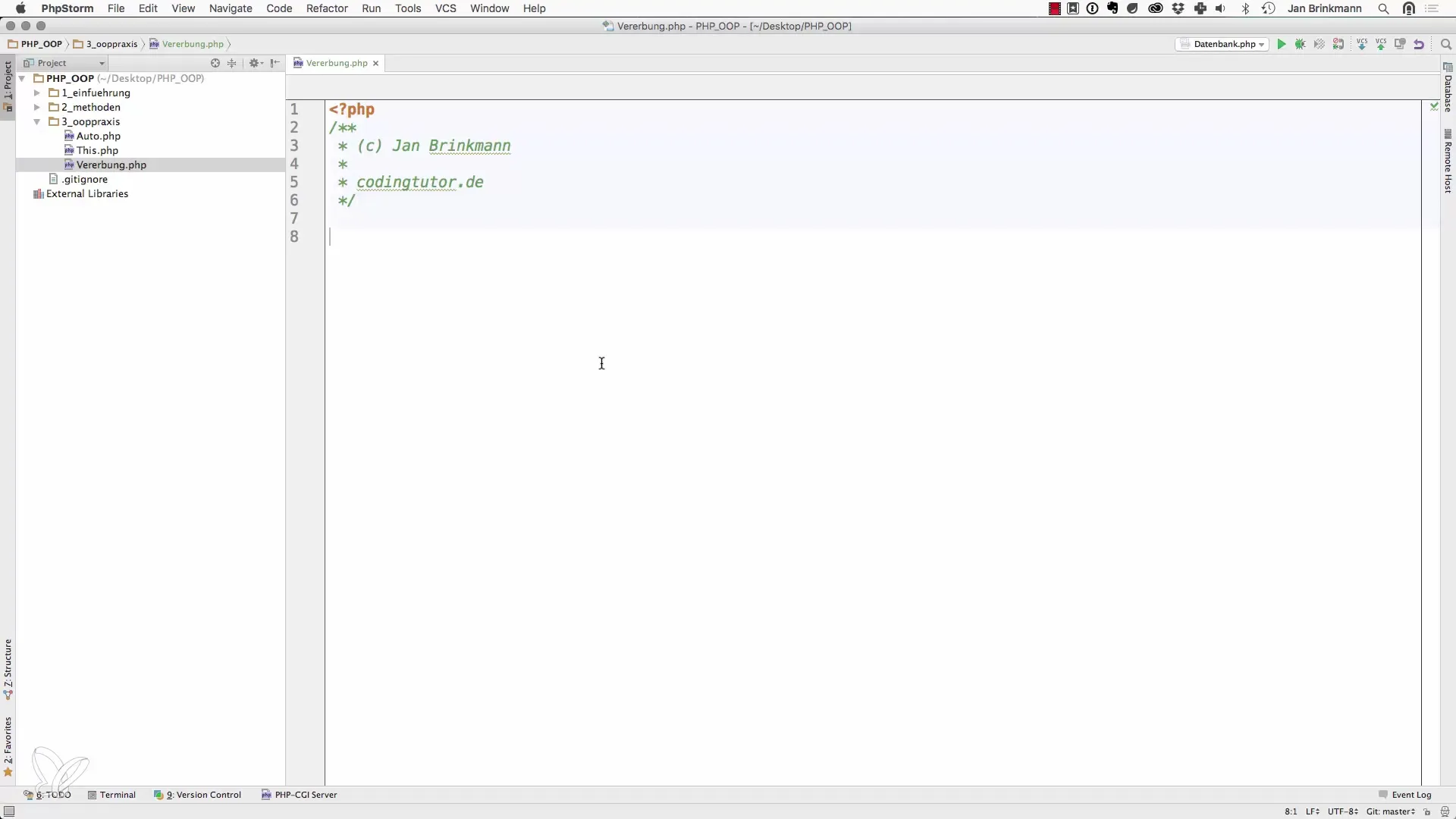
With this structure, our Car is able to increase its speed when the accelerate method is called.
2. Creating a Derived Class
Now that our base Car is defined, we will create a derived class called RaceCar. This class extends the functionality of Car by inheriting from the base class.
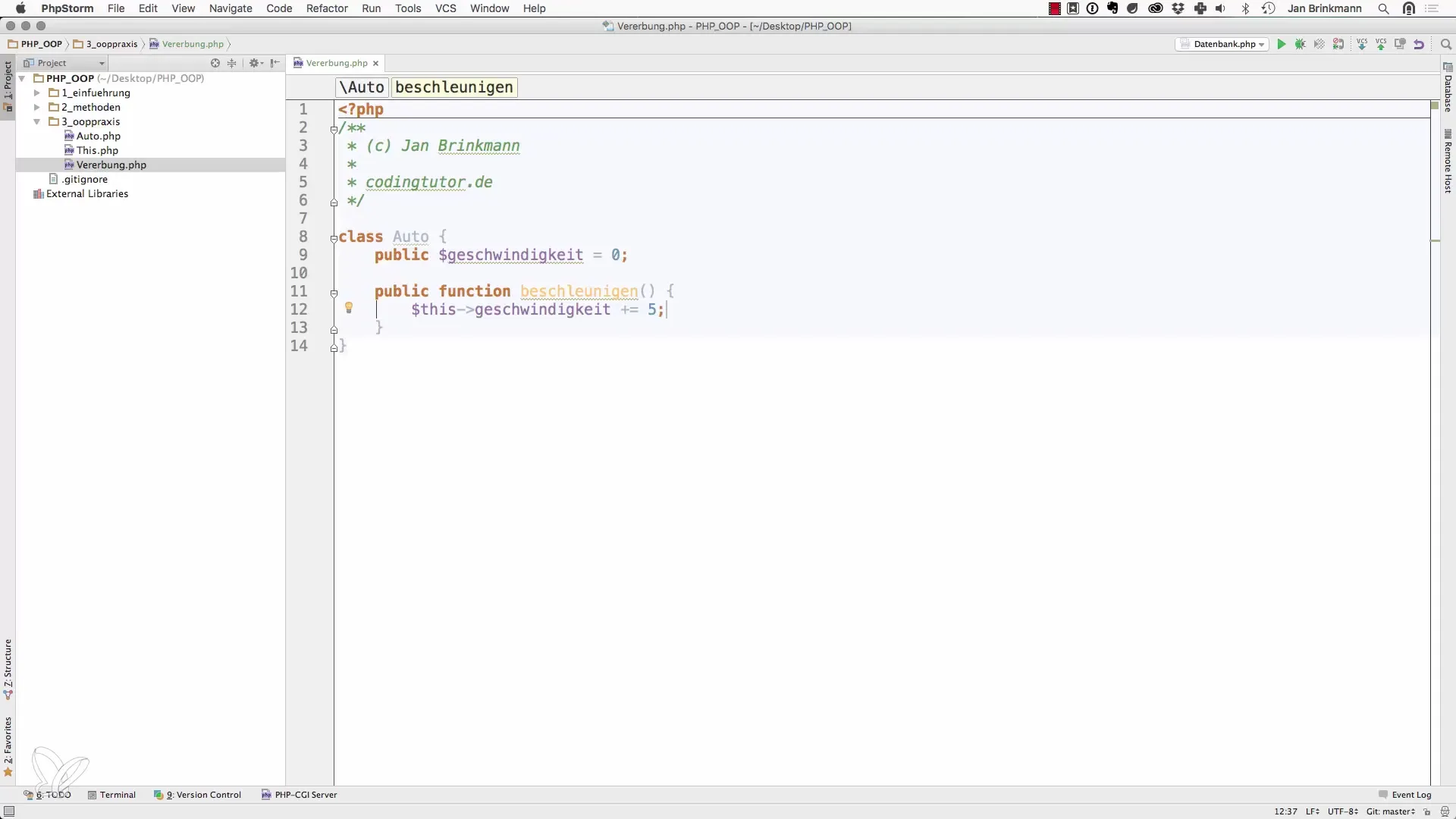
By using extends, the RaceCar class is subordinate to the Car class. Thus, the RaceCar has access to its properties and methods.
3. Instantiating Objects
Now we can instantiate both a regular Car and a RaceCar. This gives us the opportunity to test the methods of both classes.
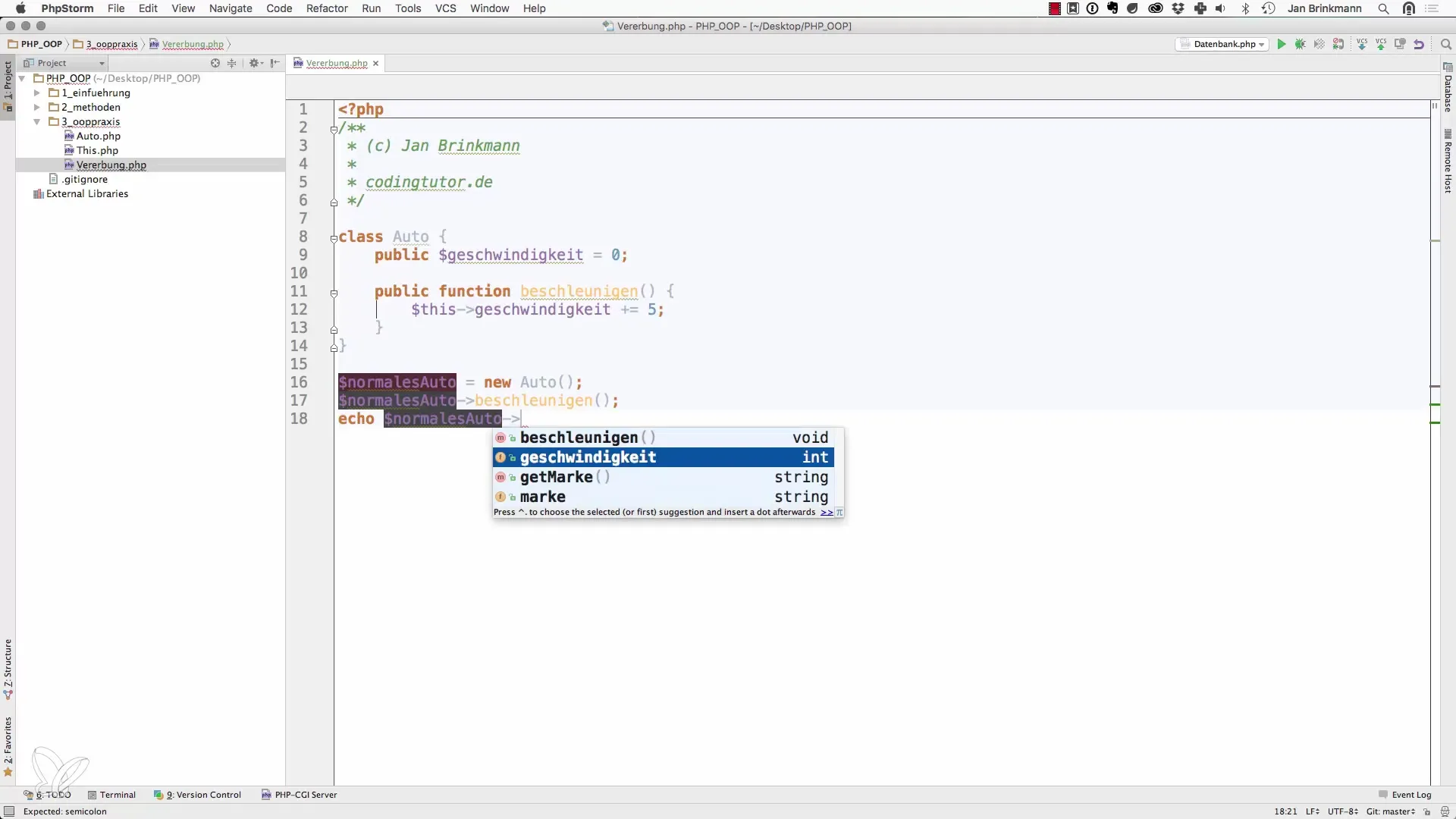
Here we see that the normalCar and the raceCar have their own instances and can both call the accelerate methods.
4. Overriding Methods
In the RaceCar class, we can override the accelerate method to introduce a more sophisticated behavior.
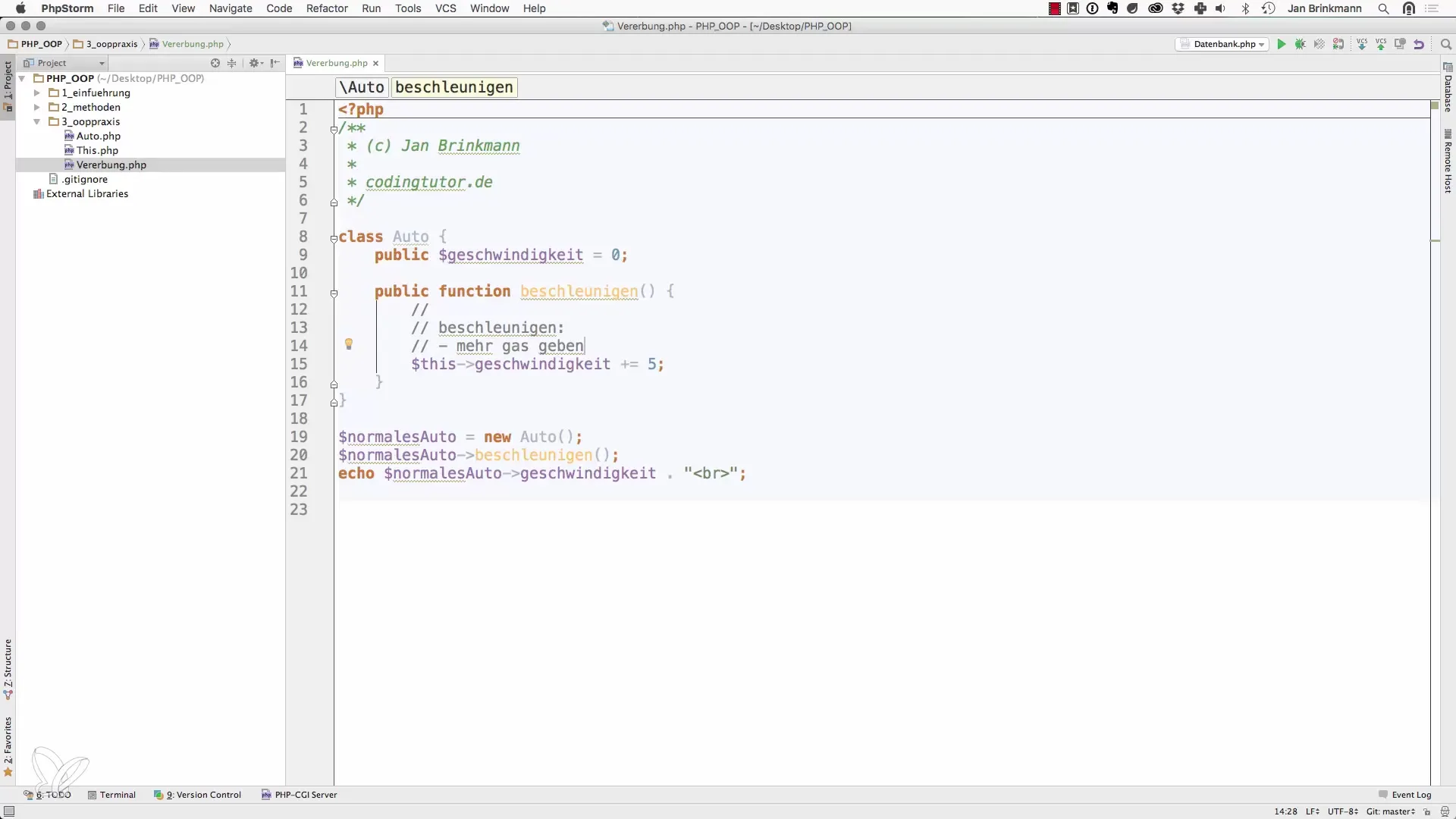
With parent::accelerate(), we call the method of the parent class and then add additional logic to engage the turbo.
5. Accessing Properties and Methods
If you now want to output the speed of both vehicles, you can access the speed property.
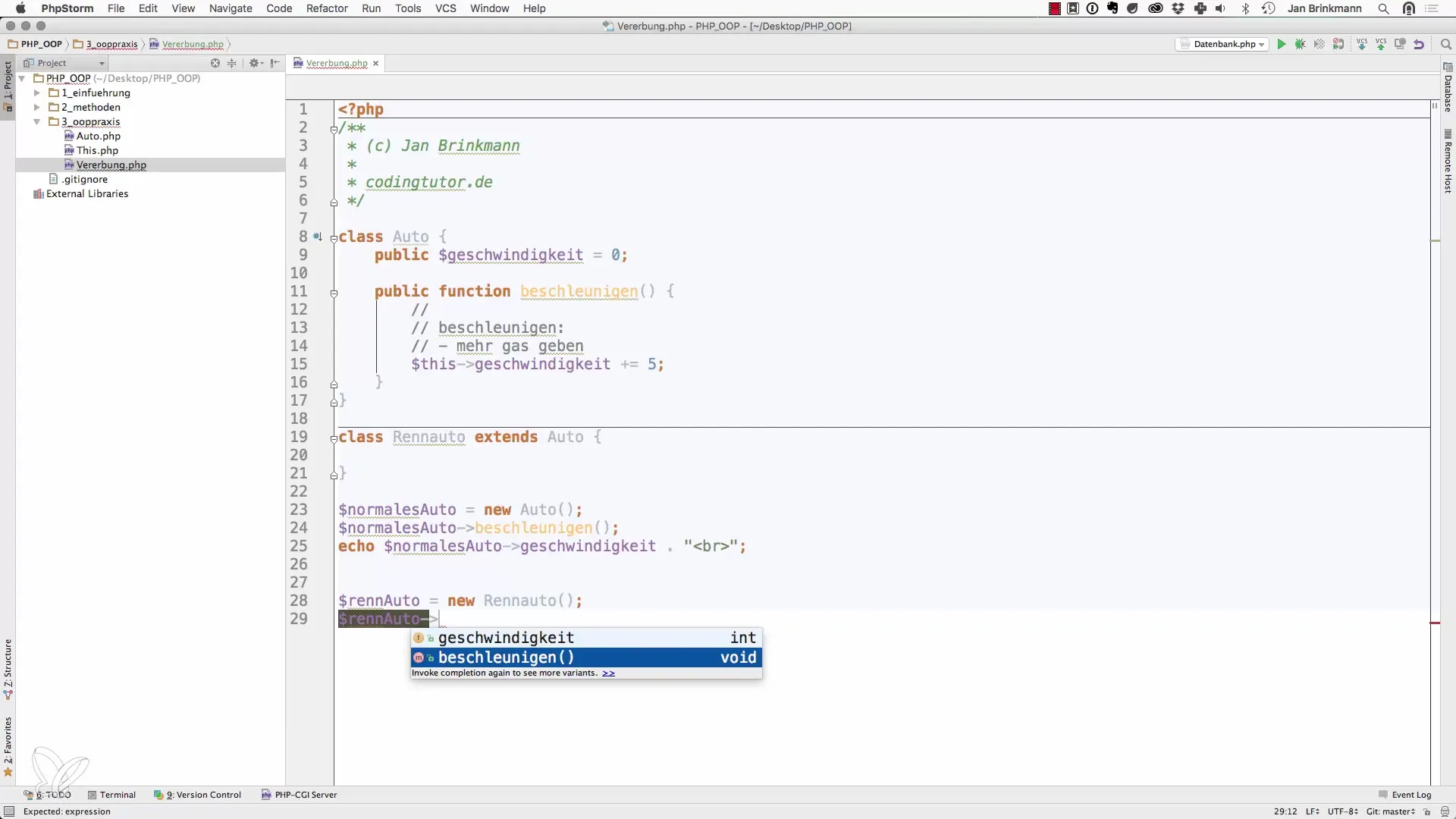
These outputs show the current speeds of both cars.
6. Understanding Polymorphism
A central theme in the context of inheritance is polymorphism. This refers to using the same method in different contexts. An example is that both the Car and RaceCar have the accelerate method, but it is implemented differently.
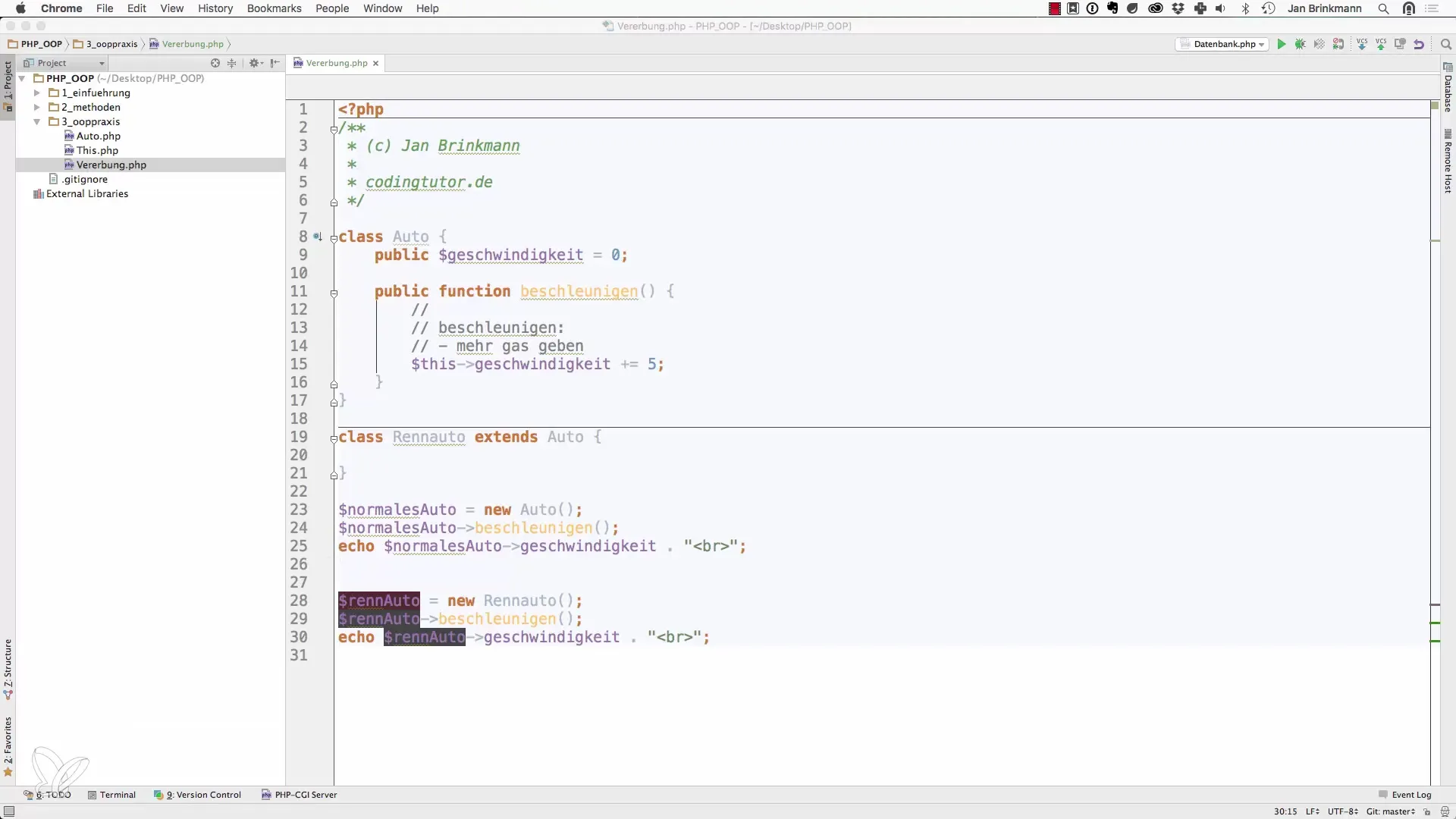
Through this function, you can accelerate any type of vehicle through the same interface.
7. Conclusion on Inheritance
Inheritance is a powerful tool in PHP that allows you to extend existing classes and create reusable code. This enables you to structure complex applications efficiently. The ability to override methods means that you can implement specific behaviors in derived classes without having to rewrite all the logic.
Summary - Object-Oriented Programming with PHP: Understanding Inheritance
Handling inheritance in PHP allows you to maintain a structured approach to software development. You can design classes so that they build upon each other and make your work easier.
Frequently Asked Questions
What is the advantage of inheritance in PHP?Inheritance promotes code reusability and simplifies software structure.
How can I override a method in a derived class?Use the same method signature and optionally parent::methodName() to utilize the parent methods.
What is polymorphism?Polymorphism refers to the ability to implement the same method differently based on the object instance.
What happens if I override multiple methods?Each method can be specifically designed for the derived class, leading to different behaviors.
Are there alternative terms for inheritance?Yes, in the literature, "derivation" or "subclassing" is often used.


